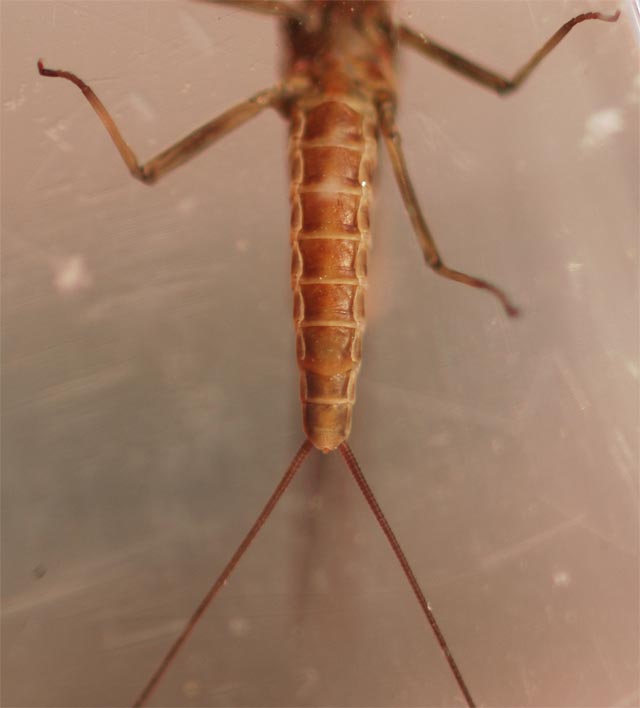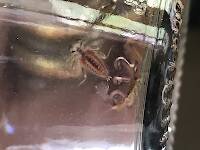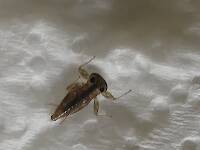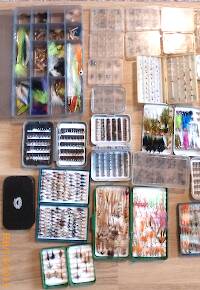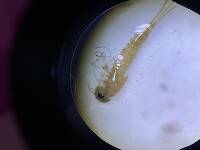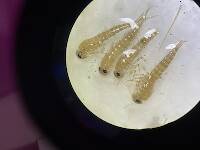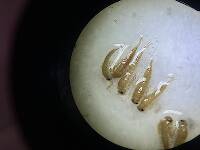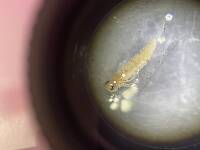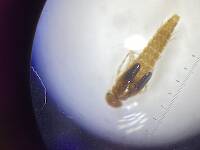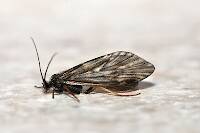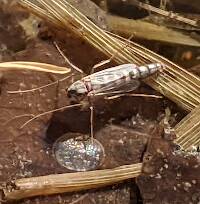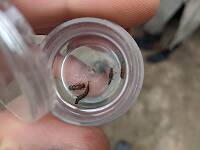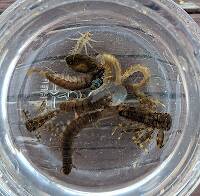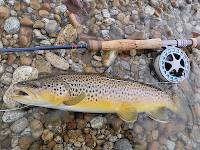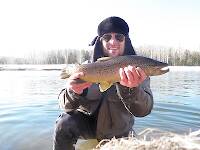
Blue-winged Olives
Baetis
Tiny Baetis mayflies are perhaps the most commonly encountered and imitated by anglers on all American trout streams due to their great abundance, widespread distribution, and trout-friendly emergence habits.
Featured on the forum
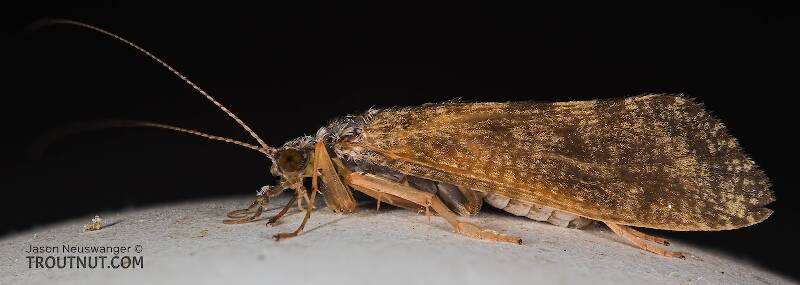

Troutnut is a project started in 2003 by salmonid ecologist Jason "Troutnut" Neuswanger to help anglers and
fly tyers unabashedly embrace the entomological side of the sport. Learn more about Troutnut or
support the project for an enhanced experience here.
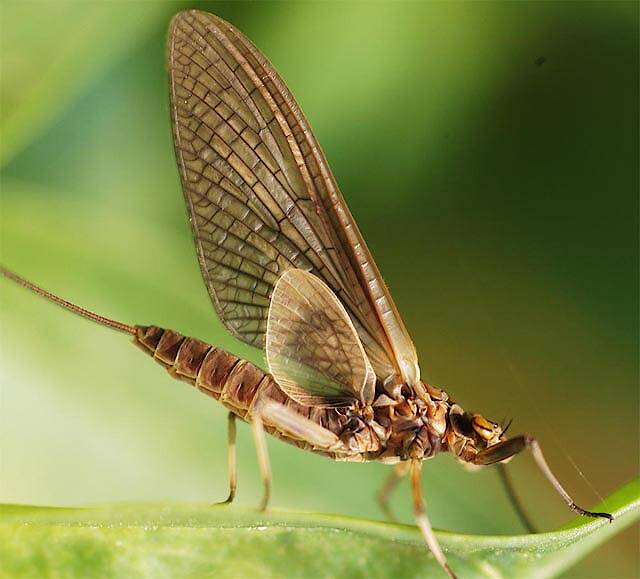
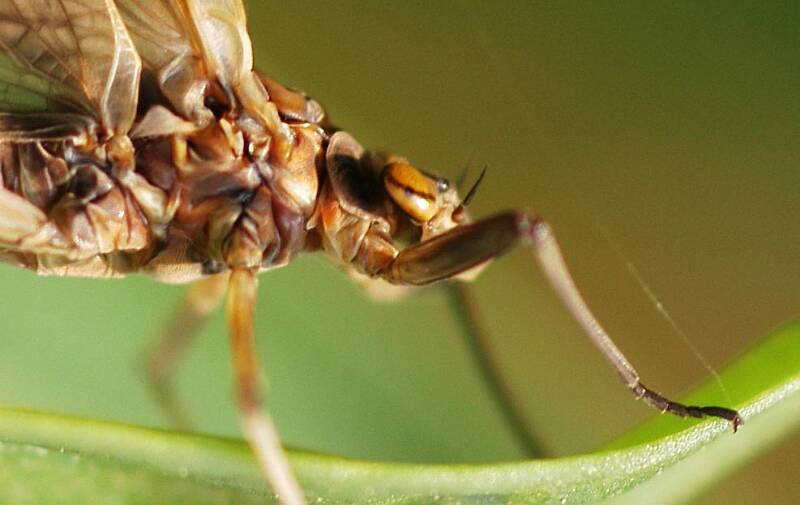
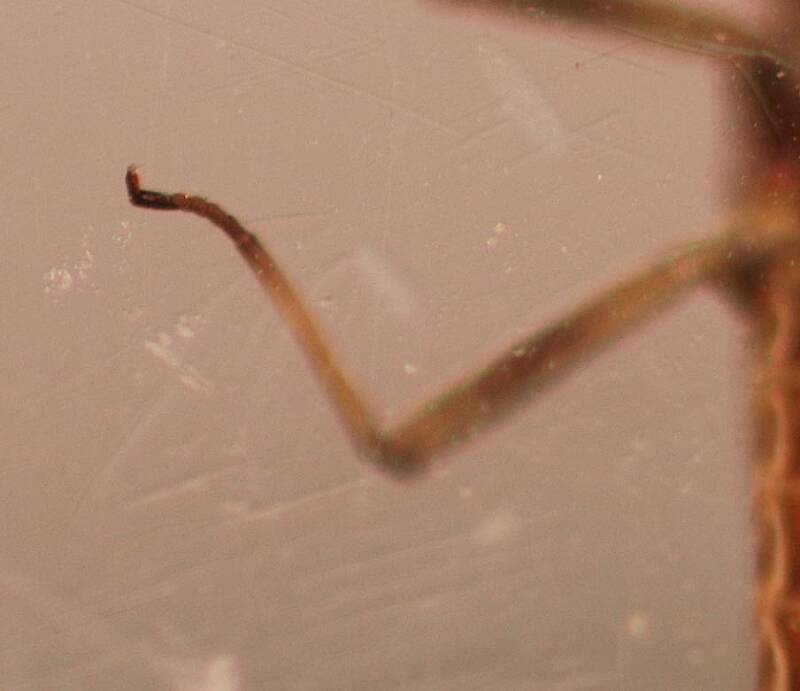
And on Apr 21, 2007April 21st, 2007, 8:56 am EDT
Dear community, thanks for consideridering these pictures.My cinpression is to be in front of a Rhithrogena, however I am not sure whether to classify it as Rhithrogena, Heptagenia or even Electrongena.
Along with the pics, additional info: I come across it in Italy, pre-alpine area, starting end of March or April. Size is around 2 or 2,5 cm., including cerci. The males are smaller.
Pic 1 the whole
Pic 2 the front leg
Pic 3 the rear leg
Thanks for any suggestions
regards
Andrea
Along with the pics, additional info: I come across it in Italy, pre-alpine area, starting end of March or April. Size is around 2 or 2,5 cm., including cerci. The males are smaller.
Pic 1 the whole
Pic 2 the front leg
Pic 3 the rear leg
Thanks for any suggestions
regards
Andrea
Taxon on Apr 21, 2007April 21st, 2007, 10:49 am EDT
Andrea-
Can I assume your specimen had only two tails, given that the genera possibilities you are considering are all of family Heptageniidae.
It would help to know how long in mm it was, exclusive of tails. One could estimate that, given the measure you provided, but for the fact that tail ends don't show in "the whole" photo.
It would also help to know which Italian region it was from. See Italian regions map below:

Can I assume your specimen had only two tails, given that the genera possibilities you are considering are all of family Heptageniidae.
It would help to know how long in mm it was, exclusive of tails. One could estimate that, given the measure you provided, but for the fact that tail ends don't show in "the whole" photo.
It would also help to know which Italian region it was from. See Italian regions map below:

And on Apr 21, 2007April 21st, 2007, 8:52 pm EDT
Taxon on Apr 22, 2007April 22nd, 2007, 6:11 am EDT
Andrea-
I would tend to favor Heptagenia because of the wing venation, and possibly H. longicauda because of the dark tarsi. However, this is just a guess at best.
I would tend to favor Heptagenia because of the wing venation, and possibly H. longicauda because of the dark tarsi. However, this is just a guess at best.
And on Apr 22, 2007April 22nd, 2007, 7:45 am EDT
Hi Roger,
I had thought that too, however some literature reports that in the rear foot, the tarsus 1 is longer then tarsus 3 in the Rhithrogena whereas in the Heptagenia Tarsus 1 is
I had thought that too, however some literature reports that in the rear foot, the tarsus 1 is longer then tarsus 3 in the Rhithrogena whereas in the Heptagenia Tarsus 1 is
Quick Reply
Related Discussions
Topic
Replies
Last Reply
Re: Puzzled on this mayfly, not even confident on family
In Male Rhithrogena hageni Mayfly Spinner by Troutnut
In Male Rhithrogena hageni Mayfly Spinner by Troutnut
1
Jul 23, 2019
by Millcreek
by Millcreek
1
Aug 30, 2010
by GONZO
by GONZO
2
Apr 20, 2020
by DangerAF1
by DangerAF1



